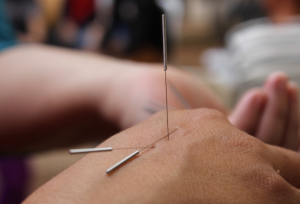Acupuncture for Carpal Tunnel: A Basic Guide


Acupuncture is a treatment method of traditional Chinese medicine (TCM), in which a therapeutic effect is to be achieved by needle pricks at specific points of the body. Therapeutic efficacy beyond the placebo effect has not yet been shown to be scientifically significant.
The traditional form of acupuncture, which has been practiced in China and Japan since the 2nd century BC, is based on the assumption that there is a “life energy of the body” (Qi) that circulates along defined pathways or meridians and is supposed to have a controlling influence on all bodily functions. A disturbed flow of energy is said to cause illnesses and through stitches in acupuncture points located on the meridians, the disturbance in the flow of Qi is supposed to be repaired. Acupressure by applying blunt pressure and moxibustion by applying heat to acupuncture points have the same therapeutic goal.
The most extensive clinical studies of acupuncture to date have been the GERAC studies. In them, acupuncture and sham acupuncture were found to be more effective for chronic low back pain and chronic knee pain in gonarthrosis in a non-blinded comparison with standard guideline-based therapy. An effect distinguishing acupuncture from sham acupuncture (comparison group) was not demonstrated. Other studies also show that sham acupuncture (a superficial acupuncture stabbed to a maximum depth of 3 mm and stabbed without needle stimulation at points in the same area of the body) has the same effect as acupuncture performed according to traditional rules. Acupuncture is used to treat many other ailments, but there is weak evidence of effectiveness for only a few applications.









